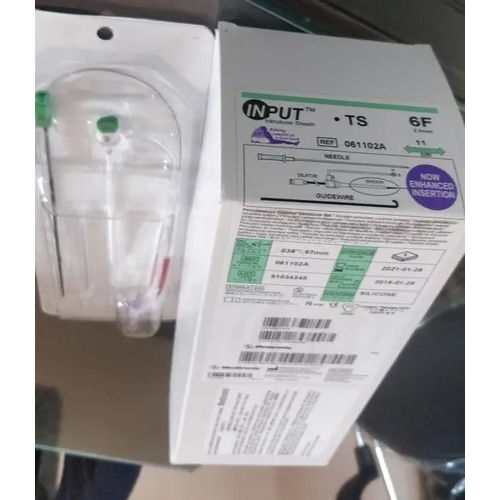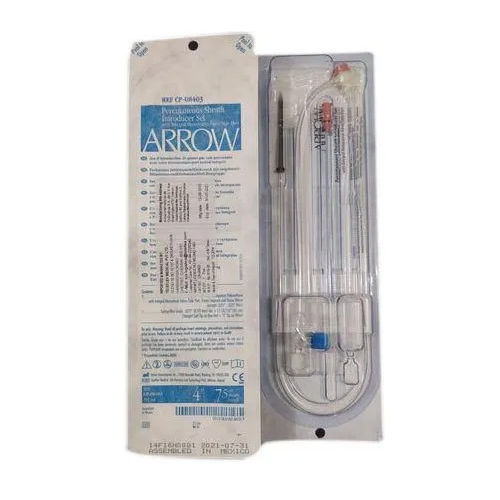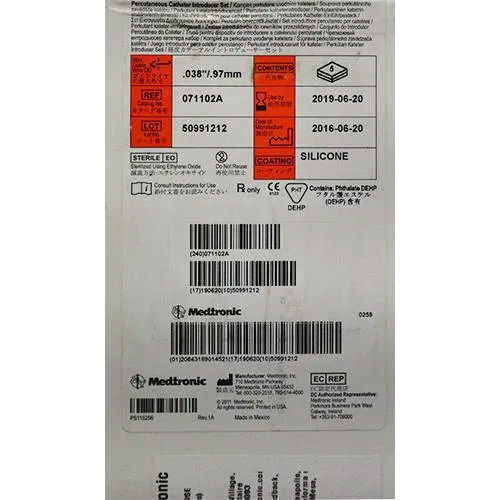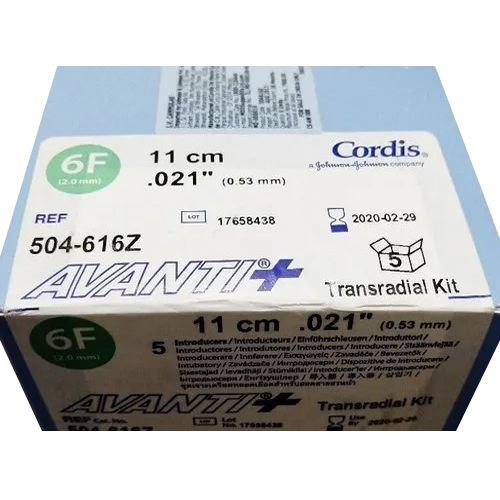100 cm Introducer Sheath
Product Details:
- Equipment Type Introducer Sheath
- Material Plastic
- Condition New
- Use Hospital
- Color White
- Click to View more
100 cm Introducer Sheath Price And Quantity
- 50 Piece
- 680 INR/Piece
100 cm Introducer Sheath Product Specifications
- Hospital
- Introducer Sheath
- White
- Plastic
- New
100 cm Introducer Sheath Trade Information
- 10000 Piece Per Week
- 4 Days
Product Description
A medical device used in interventional treatments, particularly in cardiology and vascular operations, is often referred to as a 100-centimetre introducer sheath. It is a long, thin, flexible tube-like device made to enable access and make it easier to implant other medical devices into the body, including catheters or guidewires. The introducer sheath is around 100 centimetres (or 1 metre) long, as shown by the "100 cm" specification. The sheath's length affects how far it may be introduced into the body, enabling medical personnel to reach the intended target site. Introducer sheaths are available in a variety of shapes, sizes, and materials to accommodate varied operations and patient requirements. A dilator and a hemostatic valve system are commonly used to maintain hemostasis (avoid bleeding) throughout the procedure. It's crucial to remember that medical language and gadgets can change over time, and there might be modifications or changes after September 2021, when my knowledge of them expires. It is best to speak with a medical device maker or professional healthcare provider for the most precise and recent information.
Product details
|
Coating |
Silicone, HydroPel |
|
Fr Sizes |
6 |
|
Sheath Length |
7, 11, 23cm |
|
Sheath Material |
FEP, Pebax |
|
Packaging |
Box |
|
Usage/Application |
Hospital |
|
Brand |
Medtronic |
|
Cannula Usable Length |
100 cm |
Frequently Asked Questions
Q: What is the purpose of a 100 cm introducer sheath?
A: Interventional procedures like heart catheterization or vascular interventions frequently employ a 100 centimetre introducer sheath. It enables for the insertion of different medical devices, such as catheters or guidewires, to carry out diagnostic or therapeutic treatments and gives access to blood vessels.
Q: 100 cm introducer sheath is introduced in what manner?
A: Typically, a minor skin incision or puncture is used to insert the introducer sheath into the body. Using imaging methods like fluoroscopy or ultrasound, it is directed to the desired blood vessel. The sheath serves as a conduit for inserting various medical devices once it is in place.
Q: 100-cm introducer sheath is inserted in what manner?
A: Typically, a minor skin incision or puncture is used to insert the introducer sheath into the body. Using imaging methods like fluoroscopy or ultrasound, it is directed to the desired blood vessel. The sheath serves as a conduit for inserting various medical devices once it is in place.
Q: What are the key elements to take into account when choosing a 100 cm introducer sheath?
A: When choosing an introducer sheath, it's crucial to take into account the technique that will be performed, the size of the blood vessel, the necessary working length (in this case, 100 cm), compatibility with other equipment that will be used, and the unique needs of the patient.
Q: Does the use of a 100 cm introducer sheath come with any dangers or complications?
A: The use of introducer sheaths has possible dangers and problems, much like any medical operation. Bleeding, infection, harm to blood vessels or other tissues, allergic responses to substances used in the sheath, and difficulties particular to the surgery being done are just a few examples. Healthcare providers must thoroughly evaluate each patient's condition and take the necessary steps to reduce hazards.







